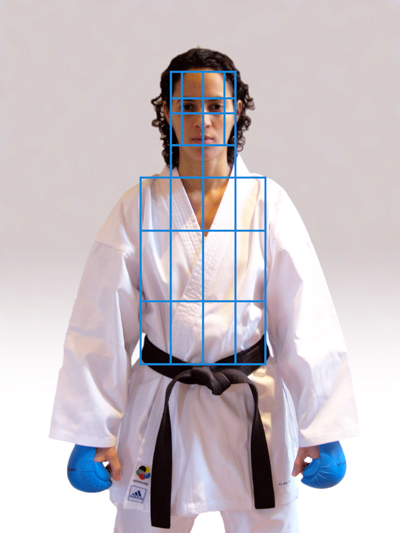Precision
Precision in combat is related to the mental ability to control the body. The cerebellum allows us to learn new techniques. During the execution of movements, the cerebellum constantly compares the movement performed with the one previously learned and makes necessary adjustments. That is how the movement precision is perfected.
 Picture: Fédération Française de Karaté et Disciplines Associées
Picture: Fédération Française de Karaté et Disciplines Associées
Targets
Precision on target is possible with a good comprehension of distance and timing. To be precise on a moving target, you will need to anticipate the movements of your opponent and to adapt to its actions.
Moreover, precision is to hit the target with a good control to avoid excessive contact.
During your training sessions, you must be very relentless to reach your target at all times. You must separate the body of the opponent into smaller targets and be thorough in detecting openings. The whole body includes much more than just the head and torso targets. It can be divided into smaller areas, as shown on the diagram below.
The more you increase the number of targets and the more you decrease their size, the more precise you become.
Some parts of the body should be avoided because of the risk of injury from contact, such as the nose or throat. You can further prioritize the lower jaw, which contact causes less pain and therefore reduces the risk of penalties. Other targets to avoid are those straight on the guard, since the openings are limited.
In our sport, only semi-contact is allowed to the face. To increase your precision to the face and decrease the risk of excessive contact, think about removing the technique before it has reached its maximum elongation. If one waits until there is an impact to the target before removing the technique, excessive contact is almost guaranteed.
Although it is a challenge, leg techniques must be as accurate as fist techniques.
 Picture: Courtesy of Karaté Québec, Taken by Joëlle Massy
Picture: Courtesy of Karaté Québec, Taken by Joëlle Massy


 0
0